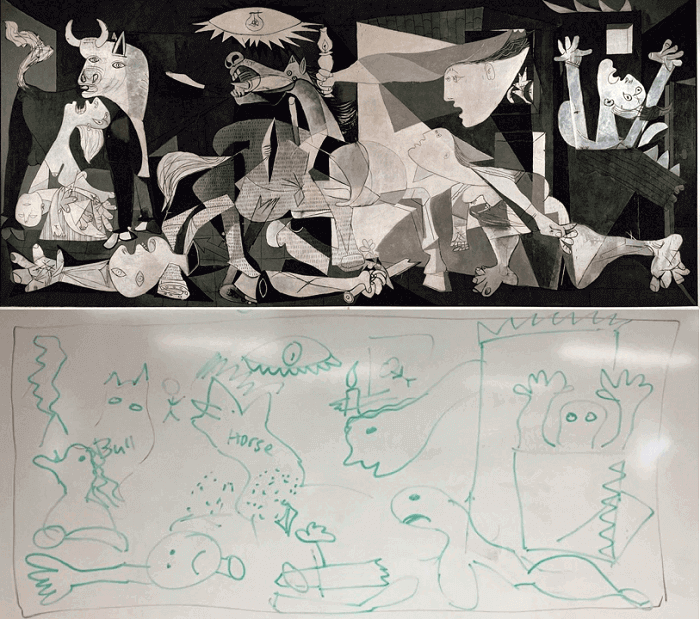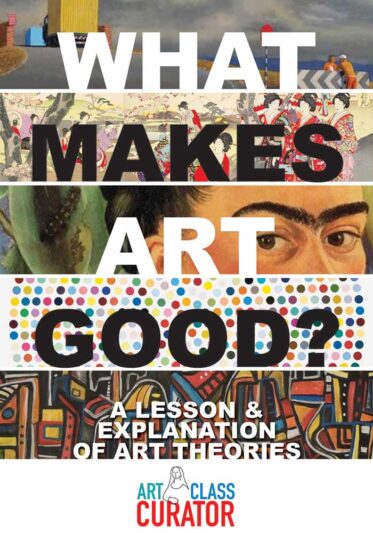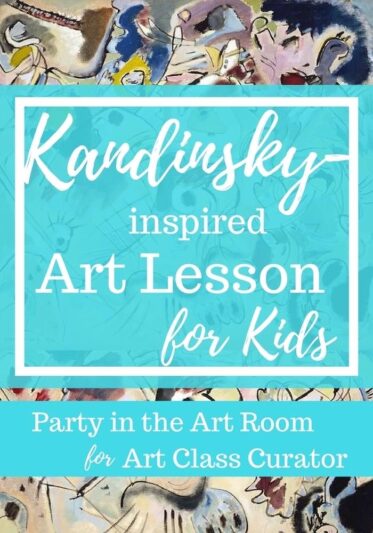Inside: Creative and engaging art observation activities that will help students connect with and remember works of art long after class ends.
How can we help our students truly see a work of art? Not just glance at it to make a judgment about whether or not they like it but really experience and connect with it?

Looking at Art
Students that spend an extended amount of time on art observation are more likely to take meaning from it and remember it. This close observation activity is at the core of the Charlotte Mason Picture Study technique and will encourage your students to study and analyze an artwork in a way that will stick with them long after the bell rings.
To start, give students at least five minutes of uninterrupted quiet time to look at an artwork and memorize every detail they can. If they get restless or say they’ve seen all there is to see, direct them back to the art observation and remind them that there is always more to find and commit to memory: colors, shapes, figures, composition, expression, and more.

Viewing the art this way allows each student to personally connect with the artwork. When you open with a class discussion, their attention is drawn to specific details as they are pointed out by other students but those features are less likely to stay with them since they didn’t recognize them on their own.
When time is up, remove the artwork from view. Now, there are a few options for testing their observation skills.
Here’s a Facebook Live video I did about this activity, and see a summary below.

Ultimate Art Appreciation Teaching Bundle
This stellar bundle includes everything you need to teach incredible, engaging art appreciation lessons.
Art Observation Activities
Solo Writing: Each student writes everything they remember
Solo Drawing: Each student draws what they remember
Team Competition: Groups of students draw the artwork and compete for the most accurate imitation
Class Discussion: An open dialogue where students work together to remember the artwork. See this post on Charlotte Mason Picture Study for a video of this discussion technique in action.
Whiteboard Drawing: Students describe the artwork and you draw what they remember (Even if they’re wrong!)
Abstract Construction: Choose an abstract artwork with well-defined shapes and colors. During the looking period, pass out scissors and construction paper in the colors of the artwork and students cut the shapes of the artwork from the paper. When you take the artwork away, have them arrange their cut shapes into the composition from memory.

Whenever their memory is exhausted, compare their work to the original artwork so they can see what they got wrong and what they got right. Students are filled with a unique sense of delight and accomplishment after these memorization activities. The discussions that follow are rich with ideas and interpretations.
These activities are fun! Fun lessons are remembered lessons, and the artworks you explore this way will be carried by your students throughout their life. The more time they spend on art observation, the more enriching the experience will be and the more they’ll enjoy it.

If you’re interested in teaching Guernica, be sure to check out my lesson and reactions to Guernica in this post which includes a free symbolism worksheet!
The Art Appreciation Printable Worksheet Bundle also has several worksheets for this activity–one for writing and one for drawing.

Art Appreciation Worksheet Bundle
This art worksheets bundle from the Art Class Curator includes 25 ready-to-use art worksheets for use with individual works of art. The worksheets for art in this document are designed to work with lots of different types of artworks, so you can just pick an artwork, print a worksheet, and start the activity. Each has instructions at the top and plenty of space to do the activity.





Thank you for great source, which made my art lessons much interesting!
How to Lead Art Discussions They’ll Want to Join
Do u have a replay of this?
Hi Marc,
This webinar now lives in the Art Class Curator Resource Library!
Brilliant!
Thanks! I’m glad you love it!
Woorksheet are very useful to students and teachers.
Thank you for the feedback!